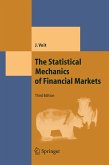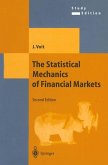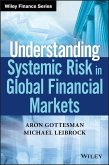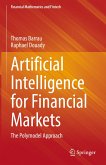Swaps, futures, options, structured instruments - a wide range of derivative products is traded in today's financial markets. Analyzing, pricing and managing such products often requires fairly sophisticated quantitative tools and methods. This book serves as an introduction to financial mathematics with special emphasis on aspects relevant in practice. In addition to numerous illustrative examples, algorithmic implementations are demonstrated using "Mathematica" and the software package "UnRisk" (available for both students and teachers). The content is organized in 15 chapters that can be treated as independent modules.
In particular, the exposition is tailored for classroom use in a Bachelor or Master program course, as well as for practitioners who wish to further strengthen their quantitative background.
In particular, the exposition is tailored for classroom use in a Bachelor or Master program course, as well as for practitioners who wish to further strengthen their quantitative background.
Dieser Download kann aus rechtlichen Gründen nur mit Rechnungsadresse in A, B, BG, CY, CZ, D, DK, EW, E, FIN, F, GR, HR, H, IRL, I, LT, L, LR, M, NL, PL, P, R, S, SLO, SK ausgeliefert werden.
From the reviews:
"The aim of this book is twofold. Firstly to equip the reader with the fundamental mathematical skills associated with modern finance and secondly to relate these skills to practical outcomes. ... It is written as an introductory text for senior undergraduates or early graduate students with a reasonable background in mathematics. ... For the interested reader references are provided if they wish to further enrich their knowledge. Also, at the end of each chapter a number of beneficial exercises are provided." (John O'Hara, zbMATH, Vol. 1273, 2013)
"The aim of this book is twofold. Firstly to equip the reader with the fundamental mathematical skills associated with modern finance and secondly to relate these skills to practical outcomes. ... It is written as an introductory text for senior undergraduates or early graduate students with a reasonable background in mathematics. ... For the interested reader references are provided if they wish to further enrich their knowledge. Also, at the end of each chapter a number of beneficial exercises are provided." (John O'Hara, zbMATH, Vol. 1273, 2013)









